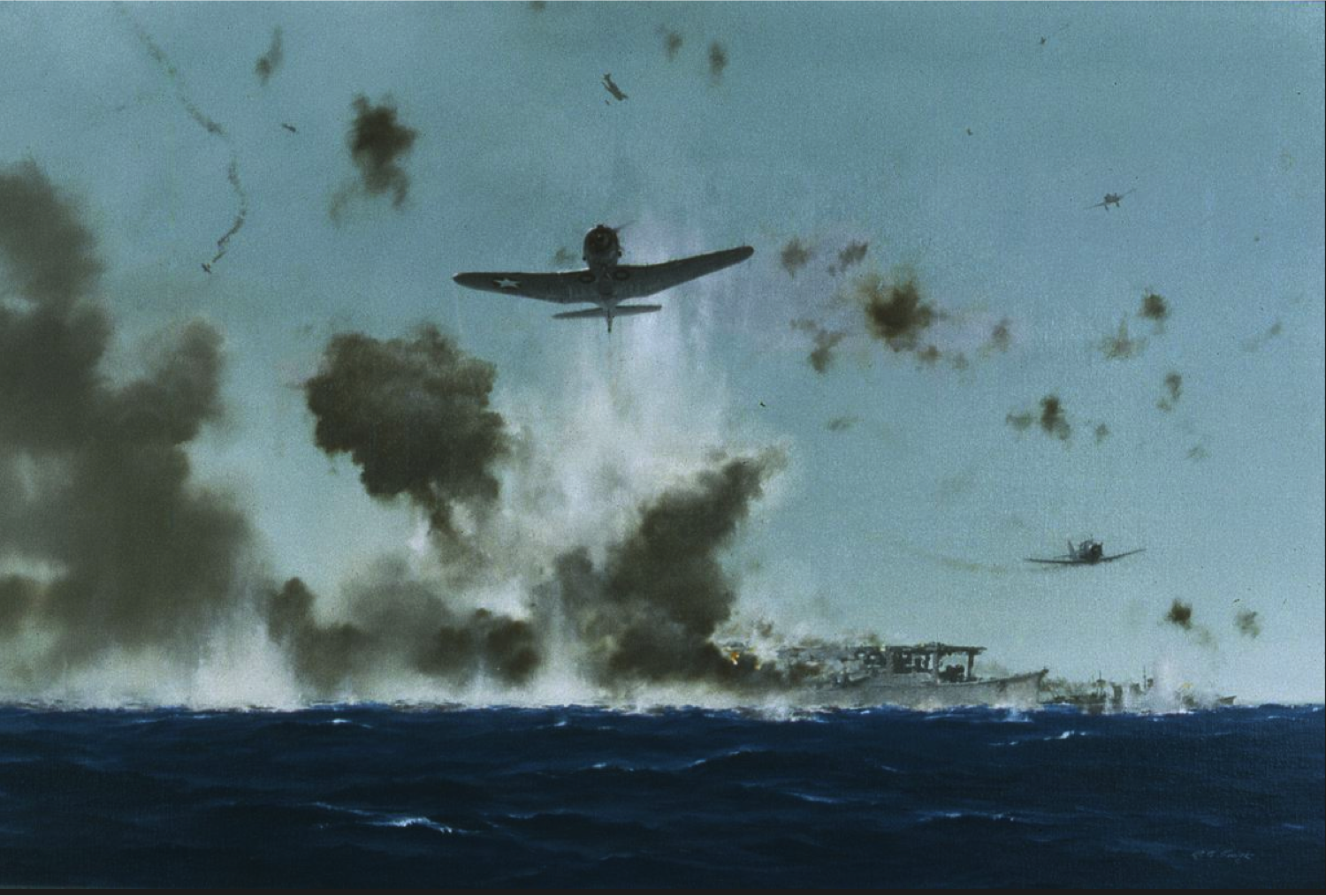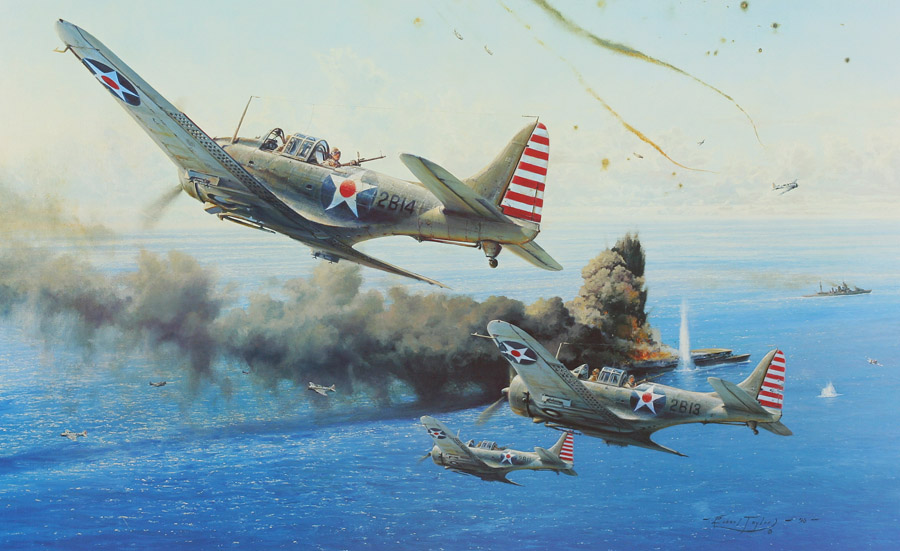Battle of Coral Sea (Day 2): Seventy Years Later
Before dawn on 8 May, both the Japanese and the American carriers sent out scouts to locate their opponents. These made contact a few hours later, by which time the Japanese already had their strike planes in the air. The U.S. carriers launched their strikes soon after 9AM, and task force commander Rear Admiral Frank Jack Fletcher turned over tactical command to Rear Admiral Aubrey W. Fitch, who had more carrier experience. Each side’s planes attacked the other’s ships at about 11AM. At that time the Japanese were partially concealed by thick weather, while the Americans were operating under clear skies.
Planes from USS Yorktown hit the Shokaku, followed somewhat later by part of USS Lexington’s air group. These attacks left Shokaku unable to launch planes, and she left the area soon after to return to Japan for repairs. Her sister ship, Zuikaku, was steaming nearby under low clouds and was not molested.
The Japanese struck the American carriers shortly after Eleven, and, in a fast and violent action, scored with torpedoes on Lexington and with bombs on both carriers. For about an hour, Lexington seemed to have shrugged off her damages, but the situation then deteriorated as fires spread through the ship. She was abandoned later in the day and scuttled. Yorktown was also badly damaged by a bomb and several near misses, but remained in operational condition.
Damage to Yorktown:
By the end of the day, both sides had retired from the immediate battle area. The Japanese sent Zuikaku back for a few days, even though her aircraft complement was badly depleted, but they had already called off their Port Moresby amphibious operation and withdrew the carrier on May 11th. At about the same time USS Yorktown was recalled to Pearl Harbor. After receiving quick repairs, she would play a vital role in the Battle of Midway in early June.
USS Lexington (CV-2) in happier days:
ref: Dept of the Navy – Naval Historical Center
(first posted 8 May 2007)












